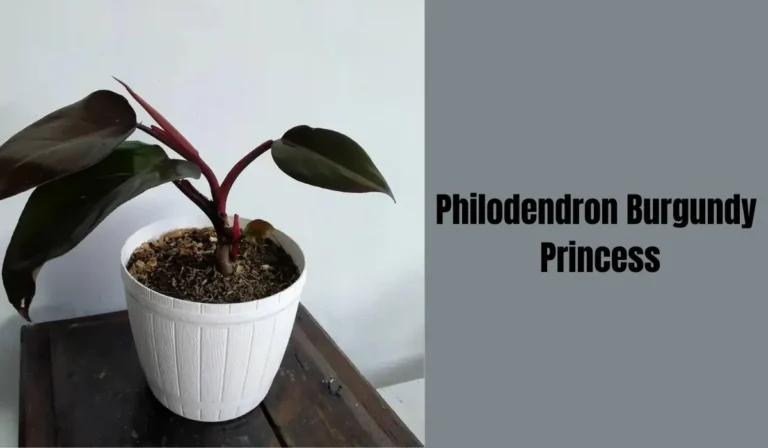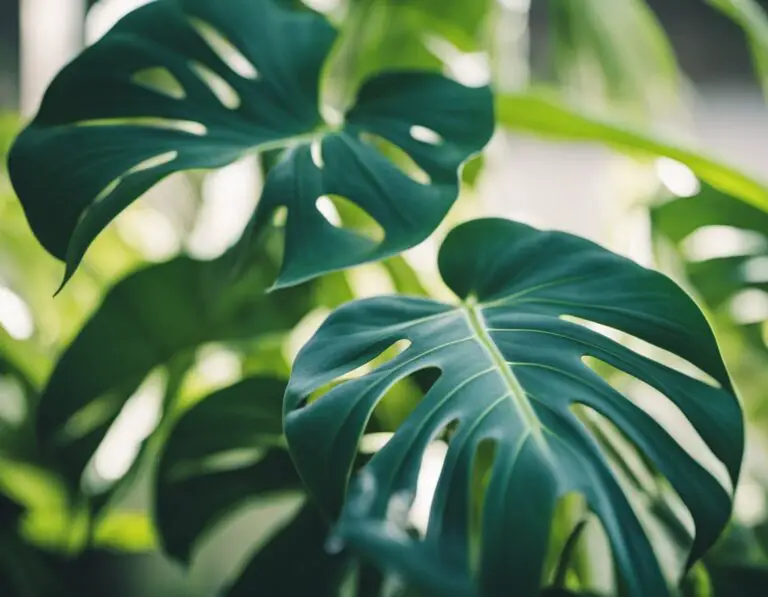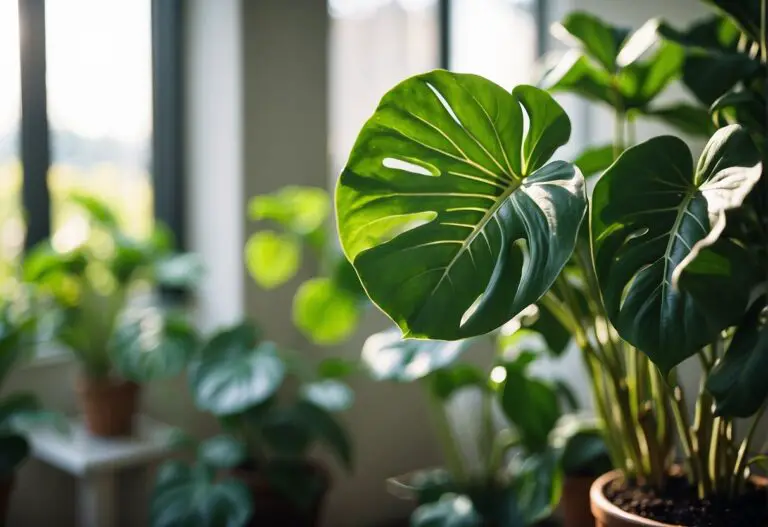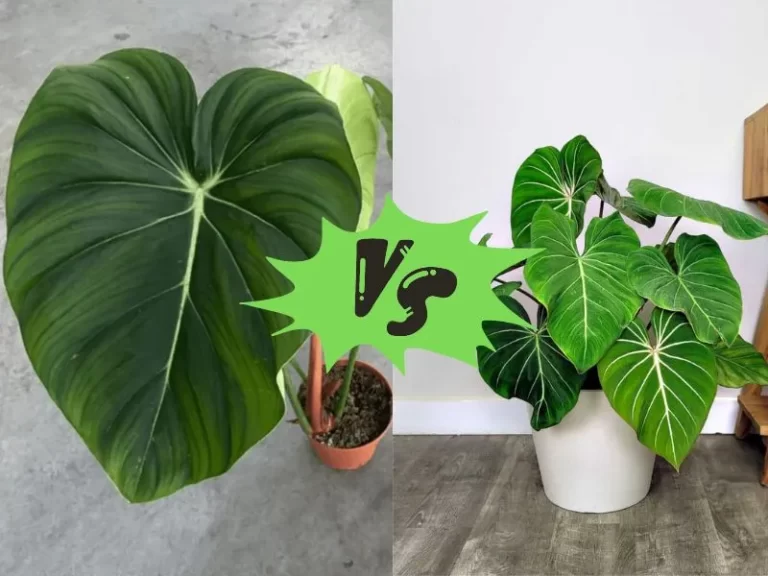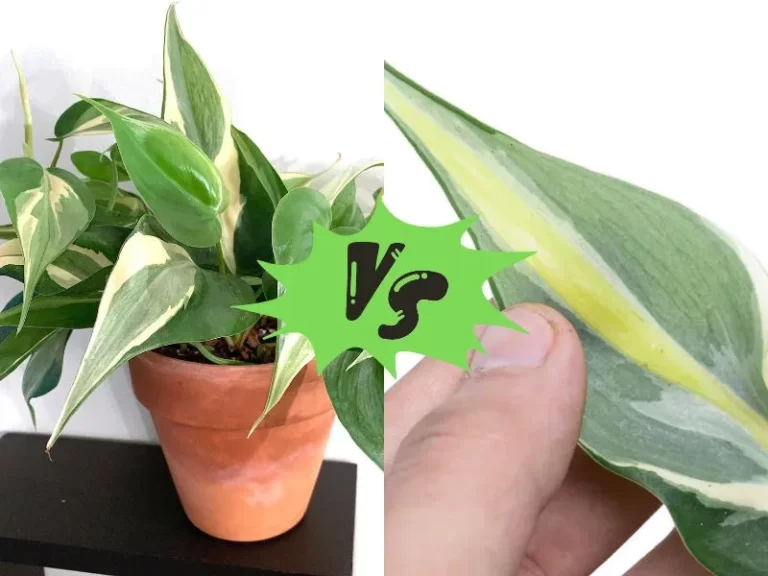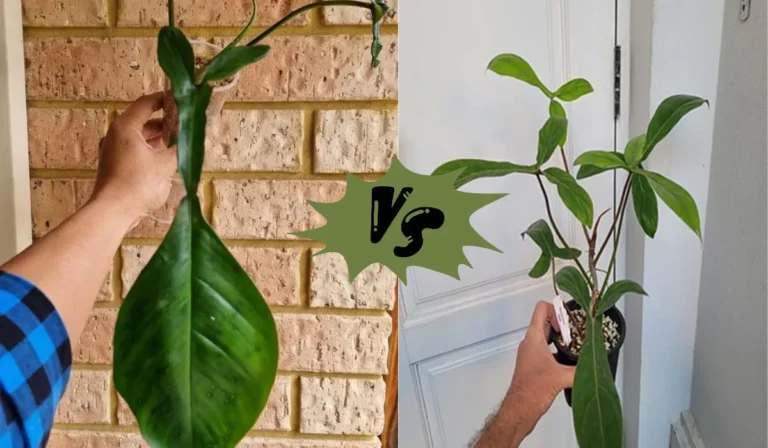Philodendron Esmeraldense: A Guide to Caring for Your Rare Houseplant
From Louise: I’m a gardening enthusiast, specializing in plant care and flower knowledge. I’m here to share my expertise and help with your gardening questions. Feel free to ask about Philodendron Plant care – I’ll respond within 24 hours!
If you’re looking for a rare and beautiful houseplant to add to your collection, the Philodendron Esmeraldense is definitely worth considering.
This stunning plant is known for its large, dark green leaves with a glossy finish, which can grow up to 20 inches long. Originally from Esmeraldas in Ecuador, this plant is fairly easy to take care of as long as you don’t overwater it.

One of the unique features of the Philodendron Esmeraldense is its appearance. The leaves are broad and heart-shaped, with a quilted surface that adds a distinctive texture.
The plant can grow up to 45 inches tall, making it a great choice for larger spaces. While it’s primarily grown as an indoor plant, it can also be grown outdoors in warmer climates. Keep reading to learn more about how to care for this beautiful plant and add it to your collection.
Understanding Philodendron Esmeraldense

If you’re a fan of the Philodendron family, you’ll definitely want to add the Philodendron Esmeraldense to your collection.
This rare and exotic plant has a lot to offer, from its unique appearance to its easy-to-care-for nature. Here’s what you need to know about understanding Philodendron Esmeraldense:
Appearance
The Philodendron Esmeraldense is a climbing hemiepiphyte that can grow up to 20 feet in the wild. It has dark green leaves that can be up to 20 inches long and only three inches wide.
The leaves are narrow and elongated, with a pointed tip and a slightly wavy edge. The leaves grow in an alternating pattern along the stem, giving the plant a unique appearance.
Care
Philodendron Esmeraldense is an easy-to-care-for plant that doesn’t require a lot of maintenance. Here are some tips to help you care for your Philodendron Esmeraldense:
- Soil: Provide well-draining aroid soil that is rich in organic matter.
- Light: The plant prefers bright, indirect sunlight but can also tolerate low light conditions.
- Water: Water the plant when the soil is dry to the touch, but avoid overwatering as it can lead to root rot.
- Temperature: The plant prefers a temperature between 60ᵒF to 85ᵒF (16ᵒC – 29ᵒC).
- Fertilizer: Fertilize by-weekly using a liquid fertilizer in spring and summer. Fertilize once a month in autumn and winter.
- Toxicity: Keep your babies and pets away from these houseplants as they are toxic.
I have had the pleasure of growing the Philodendron Esmeraldense in my own collection and have found it to be a delightful addition. Its unique appearance and easy-to-care-for nature make it a great plant for both beginners and experienced plant enthusiasts. With a little love and attention, your Philodendron Esmeraldense will thrive and bring beauty to your home.
Growth and Care for Philodendron Esmeraldense

Philodendron Esmeraldense is a rare and beautiful plant that can add a touch of tropical elegance to any indoor space. Here are some tips on how to care for and grow this plant.
Ideal Conditions
To ensure that your Philodendron Esmeraldense thrives, it’s important to provide the ideal growing conditions. Here are some factors to consider:
- Light: This plant prefers bright, indirect light. Avoid direct sunlight, as it can scorch the leaves. If the plant is not getting enough light, it may become leggy or develop small leaves. On the other hand, too much light can cause the leaves to turn yellow or brown.
- Temperature: Philodendron Esmeraldense prefers temperatures between 60ᵒF to 85ᵒF (16ᵒC – 29ᵒC). Avoid exposing the plant to cold drafts or sudden temperature fluctuations, as this can cause stress and damage to the leaves.
- Humidity: This plant prefers high humidity levels, around 65% or higher. If the air in your home is dry, you can increase humidity levels by using a humidifier, placing a tray of water near the plant, or misting the leaves regularly.
- Soil: Philodendron Esmeraldense prefers well-draining soil that is rich in organic matter. You can use a commercial potting mix or create your own by mixing equal parts of peat moss, perlite, and vermiculite.
- Watering: Water your Philodendron Esmeraldense when the top inch of soil feels dry to the touch. Avoid overwatering, as this can lead to root rot. In general, it’s better to underwater than overwater this plant.
- Fertilizer: Fertilize your Philodendron Esmeraldense by-weekly using a liquid fertilizer in spring and summer. Fertilize once a month in autumn and winter. This will provide the plant with the nutrients it needs to grow and thrive.
Common Issues and Solutions
Even with the best care, your Philodendron Esmeraldense may encounter some common issues. Here are some problems you may encounter and how to solve them:
- Yellow leaves: If the leaves of your Philodendron Esmeraldense are turning yellow, it may be due to overwatering, underwatering, or too much direct sunlight. Adjust your watering schedule and move the plant to a shadier spot if necessary.
- Brown tips: If the tips of the leaves are turning brown, it may be due to low humidity levels or too much fertilizer. Increase humidity levels and reduce the amount of fertilizer you are using.
- Leggy growth: If your Philodendron Esmeraldense is growing leggy, it may be due to a lack of light. Move the plant to a brighter spot or provide supplemental lighting.
- Pests: Philodendron Esmeraldense may be susceptible to pests such as spider mites, mealybugs, and scale. If you notice any signs of infestation, isolate the plant and treat it with an insecticidal soap or neem oil.
By following these tips, you can ensure that your Philodendron Esmeraldense grows and thrives, adding a touch of natural beauty to your home or office.
Propagation of Philodendron Esmeraldense

Philodendron Esmeraldense is a beautiful plant that can be propagated easily. In this section, we will discuss the step-by-step process for propagating Philodendron Esmeraldense and provide some tips for success.
Step by Step Process
- Choose a healthy plant: Select a healthy Philodendron Esmeraldense plant with no signs of disease or pests. Look for a plant with a strong stem and lush green leaves.
- Take a cutting: Using a clean, sharp knife or scissors, take a cutting from the stem of the plant. Make sure the cutting is at least 6 inches long and has at least two leaves.
- Remove the lower leaves: Remove the lower leaves from the cutting, leaving only two leaves at the top.
- Dip in rooting hormone: Dip the cut end of the cutting in rooting hormone. This will help the cutting to develop roots more quickly.
- Plant the cutting: Plant the cutting in a pot with well-draining soil. Water the soil until it is moist but not waterlogged.
- Provide humidity: Cover the cutting and pot with a plastic bag or dome to create a humid environment. This will help the cutting to root more quickly.
- Place in a bright, warm spot: Place the pot in a bright, warm spot, but out of direct sunlight. Keep the soil moist but not waterlogged.
- Wait for roots to develop: Check the cutting regularly for signs of new growth. After a few weeks, you should see new roots developing.
- Transplant the cutting: Once the cutting has developed a good root system, transplant it into a larger pot with fresh soil.
Tips for Success
- Use a clean, sharp knife or scissors to take the cutting. This will help to prevent disease and ensure a clean cut.
- Make sure the cutting has at least two leaves. This will provide the cutting with enough energy to develop roots.
- Use a rooting hormone to help the cutting develop roots more quickly.
- Keep the soil moist but not waterlogged. Overwatering can cause the cutting to rot.
- Provide humidity by covering the cutting and pot with a plastic bag or dome. This will help the cutting to root more quickly.
- Place the pot in a bright, warm spot, but out of direct sunlight. Direct sunlight can burn the cutting.
- Transplant the cutting into a larger pot with fresh soil once it has developed a good root system.
Propagation of Philodendron Esmeraldense is a rewarding process that can be easily accomplished with the right tools and techniques. By following these simple steps and tips, you can successfully propagate your own Philodendron Esmeraldense plants.
Benefits of Philodendron Esmeraldense
Philodendron Esmeraldense is a beautiful and unique plant that offers many benefits. Here are some of the benefits of having this plant in your home:
- Air purification: Philodendron Esmeraldense is known for its air-purifying abilities. According to NASA’s Clean Air Study, philodendrons are great at removing harmful VOCs like formaldehyde from the air. Formaldehyde can irritate our eyes, lungs, skin, and throat and may also lead to cancer. Having Philodendron Esmeraldense in your home can help improve the air quality and make your home a healthier place to be.
- Aesthetics: Philodendron Esmeraldense is a stunning plant with unique foliage that can add a touch of beauty and elegance to any room. Its leaves are shiny and dark green, with a velvety texture. The plant has a climbing habit and can be trained to grow on a trellis or other support, making it a great addition to any vertical garden.
- Easy to care for: Philodendron Esmeraldense is a low-maintenance plant that is easy to care for. It prefers well-draining soil and indirect sunlight, but can also tolerate low light conditions. The plant should be watered regularly, but not overwatered, as this can cause root rot. With proper care, Philodendron Esmeraldense can thrive and grow for many years.
- Versatile: Philodendron Esmeraldense can be grown in a variety of settings, including in pots, hanging baskets, and on trellises. It can also be used as a ground cover or as a climbing plant in outdoor gardens. This versatility makes it a great choice for any gardener, whether you have limited space or a large outdoor area.
Frequently Asked Questions
What are some care tips for indoor Philodendrons?
Philodendrons are great indoor plants that can thrive in a variety of environments. Here are some care tips to keep your indoor Philodendrons healthy:
- Water your Philodendrons once a week, allowing the soil to dry out slightly between waterings.
- Philodendrons prefer bright, indirect sunlight, so place them near a window that receives filtered light.
- Fertilize your Philodendrons every two weeks during the growing season with a balanced liquid fertilizer.
- Keep your Philodendrons away from cold drafts and temperatures below 60°F (16°C).
- Prune your Philodendrons regularly to promote bushier growth and remove any dead or yellowing leaves.
How do you care for a variegated Philodendron?
Variegated Philodendrons require the same care as non-variegated Philodendrons, with a few additional considerations:
- Variegated Philodendrons require more light than non-variegated varieties, so place them in a bright, well-lit area.
- Avoid direct sunlight, as it can cause the leaves to burn and damage the variegation.
- Variegated Philodendrons may require more frequent watering than non-variegated varieties, as they tend to have thinner leaves that can dry out more quickly.
Do Philodendrons prefer full sun or shade?
Philodendrons prefer bright, indirect sunlight, but can tolerate some shade. Direct sunlight can burn the leaves and cause damage to the plant.
How much sunlight do Philodendrons need?
Philodendrons require bright, indirect sunlight to thrive. Place them near a window that receives filtered light, and avoid direct sunlight, which can cause damage to the plant.
What are some similar plants to Philodendron Esmeraldense?
If you’re looking for plants similar to Philodendron Esmeraldense, here are a few options:
- Philodendron Birkin
- Philodendron Moonlight
- Philodendron Rojo Congo
- Monstera Deliciosa
What are some unique features of Philodendron Sharoniae?
Philodendron Sharoniae is a rare and unique Philodendron variety that features:
- Large, heart-shaped leaves with prominent veins
- A dark green coloration on the upper surface of the leaves and a reddish-brown coloration on the lower surface
- A climbing growth habit, making it a great choice for trellises or totem poles
- A slow growth rate, making it a great option for smaller spaces.

